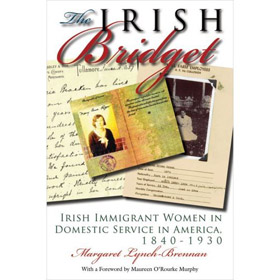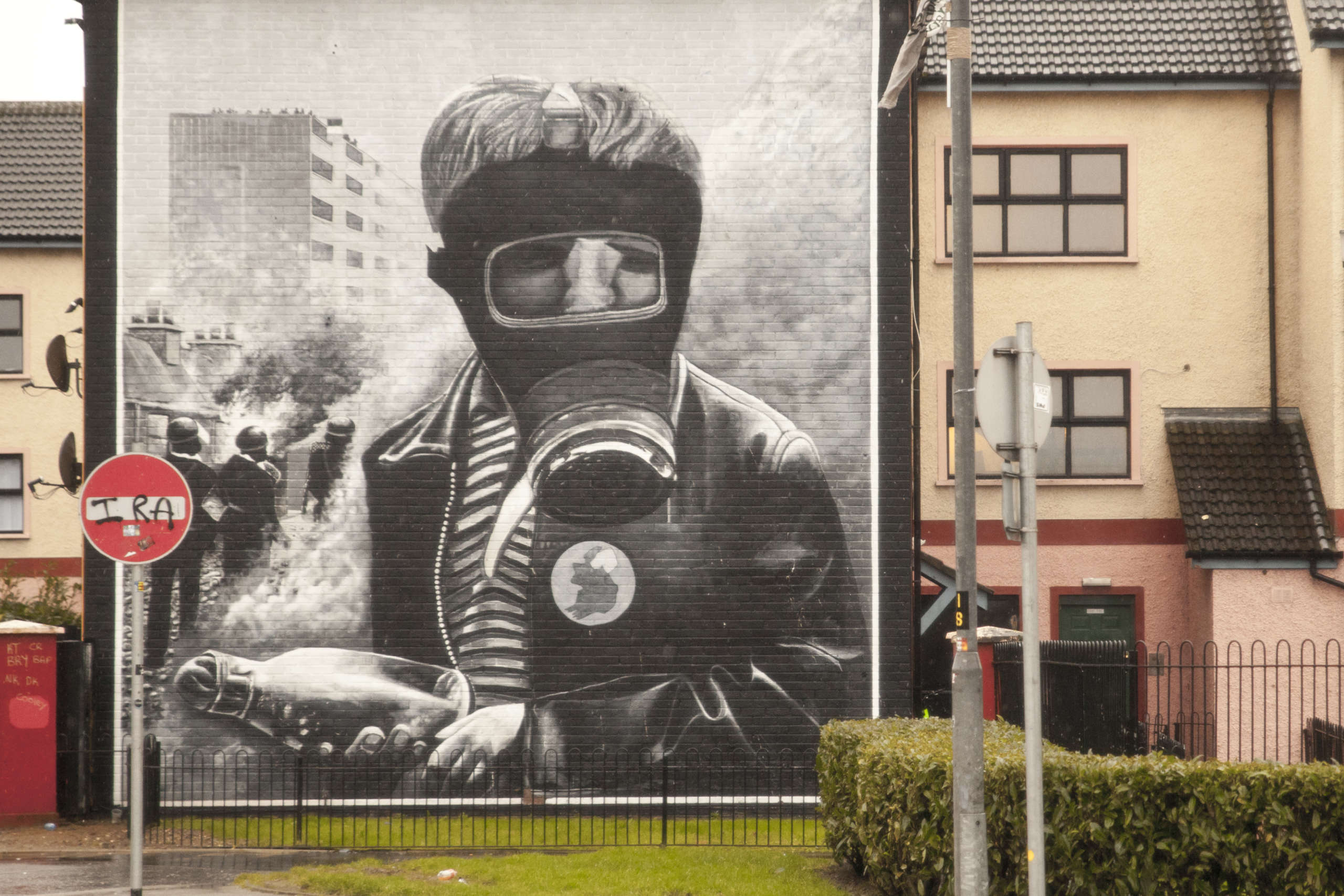
The cover of Margaret Lynch-Brennan's landmark book on Irish domestic servants.
A footnote in a book she was reading while studying history and gender led Margaret Lynch-Brennan to a hidden trove of information about the group of Irish immigrants she now believes finally brought the Irish into the American melting pot: the Irish domestic servant.
She calls these young women who emigrated from Ireland between 1840 and 1930 “The Irish Bridgets.” She’ll be talking about them, the subject of her 2009 book, “The Irish Bridget: Irish Immigrant Women in Domestic Service in America, 1840-1930,” at the Ebenezer Maxwell Mansion in Philadelphia on Saturday, May 8, from 2-4 p.m.
The book grew out of her 2002 American History Ph.D. dissertation.
“I was reading a lot of books,” she explained, “and one of the books mentioned that most Irish women started work as domestics.”
Lynch-Brennan wondered why there wasn’t more written on the topic. “The importance of Irish women generally has been underlooked, not overlooked,” she says. “Most of the history that’s been written about the Irish focuses on the men, but unlike other immigrant groups, the women who immigrated actually outnumbered the men…that’s very different.”
She began digging, and what she found convinced her that it was these Irish women, some as young as 13, who helped bring the Irish acceptance in American society where “No Irish Need Apply” was a familiar sign in many urban areas.
“The typical middle class WASP wouldn’t know any Irish men on a first name basis, but they would know Irish women because they lived in the house. Most Americans during that time period only employed one servant, and that was a ‘maid of all work.’ She worked 10-12 hours a day, 7 days a week, taking care of their homes and their children.”
It wasn’t an easy life, but these women found ways to have a good time.
“Going to church was a big part of their social lives. They could see people from their hometowns. The women who worked in domestic service didn’t live with other Irish people, so meeting and talking to others at church presented a way to keep up with the Irish community.”
Irish dances were another social outlet for the young Bridget. “The Irish counties associations were concerned with finding ways for the girls and boys to meet, so Irish set dancing was arranged. Most Irish women eventually married. It was an aspect of Irish culture in Ireland that one was not considered an adult until one married, and most wanted to get married.”
The name Bridget, or Biddy, became so associated with the Irish domestic servants that women actually changed their names to distance themselves from that stereotype. “For a long time, the name Bridget wasn’t used. There’s a period where you won’t find any girls being named Bridget. Irish-Americans today have forgotten that association,” and the name has become popular once again.
Lynch-Brennan’s book contains many personal letters, never before published, as well as photos. I was curious as to how she tracked down such hard-to-find treasures.
“It wasn’t easy,” she said. “They didn’t have time and leisure to leave important documents behind, plus so many of them changed their names. It was a challenge.”
Two historians in particular, Kerby Miller and Arnold Schrier, provided Lynch-Brennan with invaluable assistance.
“Both had gone to Ireland [Miller in the 70’s and Schrier in the 50’s] and put in a call for letters from Irish-Americans sent home to Ireland. They put ads in newspapers.”
Lynch-Brennan spent a week poring over Miller’s collection of letters, and he generously allowed her to quote from the ones that were relevant to her work.
Her husband told her she should advertise. “I had a card made up, and I would pass it around at talks I gave. I posted on genealogical websites, and found a treasure trove. One woman had her grandmother’s letters, and let me have them for the book.”
“Another historian, Hofstra professor Maureen Murphy, has written the most on the topic; she’s written all the articles. She’s known to all the historians, in America and Ireland. She’s a lovely person, and was very generous.” Murphy wrote the foreward to Lynch-Brennan’s book.
I had to know one final thing: Were any of Lynch-Brennan’s own ancestors an Irish Bridget?
“I have one,” she told me. “My mother’s great-grandmother’s sister, Jane Shalboy. She came over during the famine. She worked as a domestic. The family was from the village of Summerhill, in County Meath. Owen Shalboy left Ireland in the 1850s and brought his mother with him. There isn’t anyone left today in Ireland with that name, but a few years ago I went back there, and it was the first time in 150 years that descendants of two branches of the family had met. There was a memorial service in the parish while I was there, to honor all those relatives who had died. People came from all over Ireland to the home parish to remember their ancestors. I felt like the circle was complete.”
For information on Margaret Lynch-Brennan’s talk at the Ebenezer Maxwell Mansion, go to the Mansion Web site. Reservations are required.
For information on the book, “The Irish Bridget: Irish Immigrant Women in Domestic Service in America, 1840-1930,” go to the Syracuse University Press Web site.



